How To Find Leads For Sales: 7 Strategies (2025)
Updated December 2025
There are many ways to find leads, but not all are equal.
I recommend that you don't buy pre-existing lead lists, as they are less accurate, and can contain “spam traps” which will cause your emails to go to spam.
Instead, you should scrape your leads directly from the source.
In this article, I share 7 ways to find and scrape B2B leads so that you can 10x your company's revenue:
1. LinkedIn Sales Navigator
2. Job ad sites (LinkedIn, Upwork & Indeed)
3. Crunchbase & PitchBook
4. Competitor audiences
5. Find “top companies in x category” with Google, X & ChatGPT
6. Google Maps
7. YCombinator
1. LinkedIn Sales Navigator
LinkedIn Sales Navigator is the best B2B lead database.
Other lead platforms, like Apollo and ZoomInfo, are less accurate, since only LinkedIn owns the data.
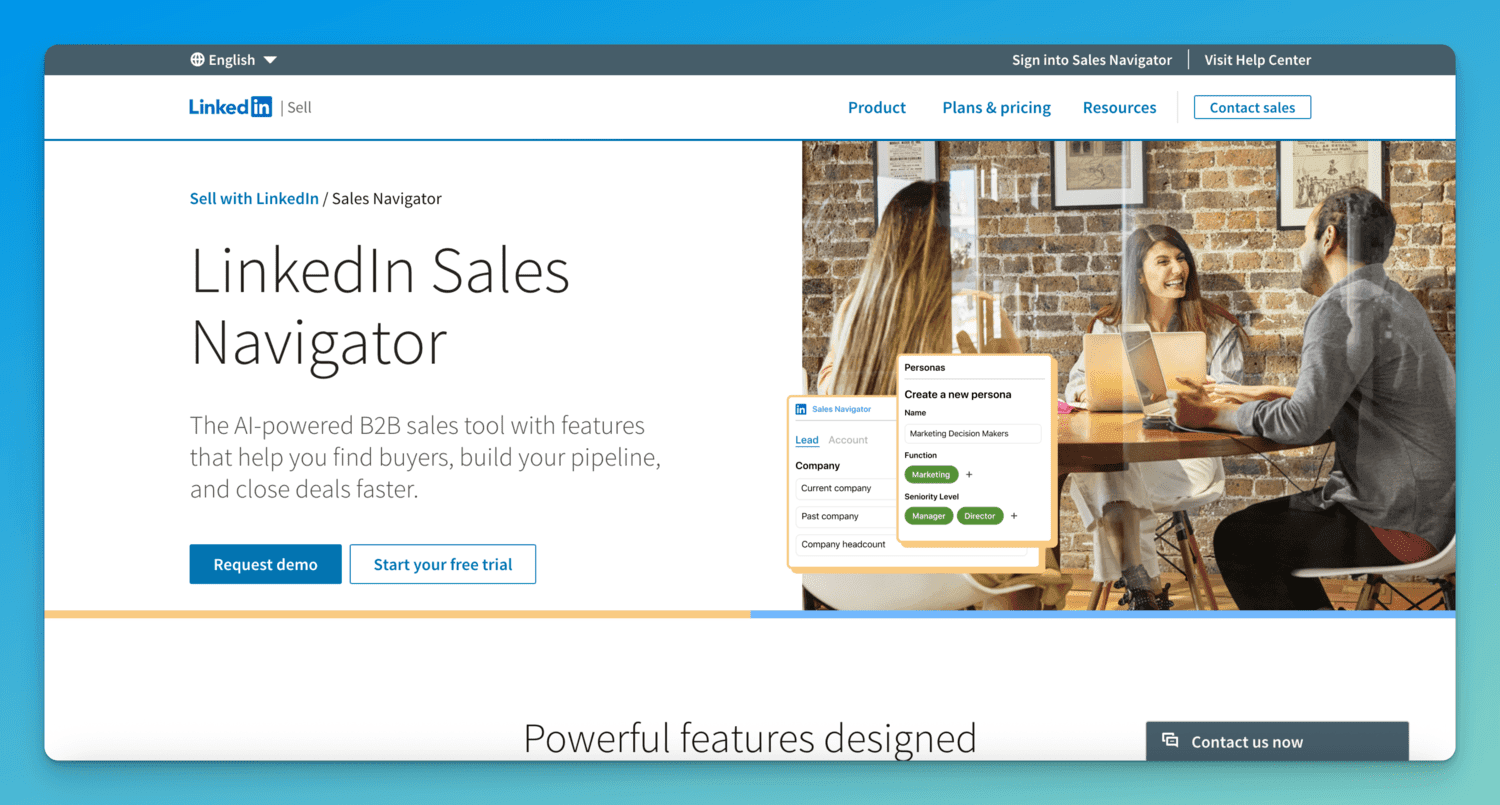
LinkedIn Sales Navigator allows you to search for B2B leads in any industry or location. They have over 25 filters that you can use to narrow your search.
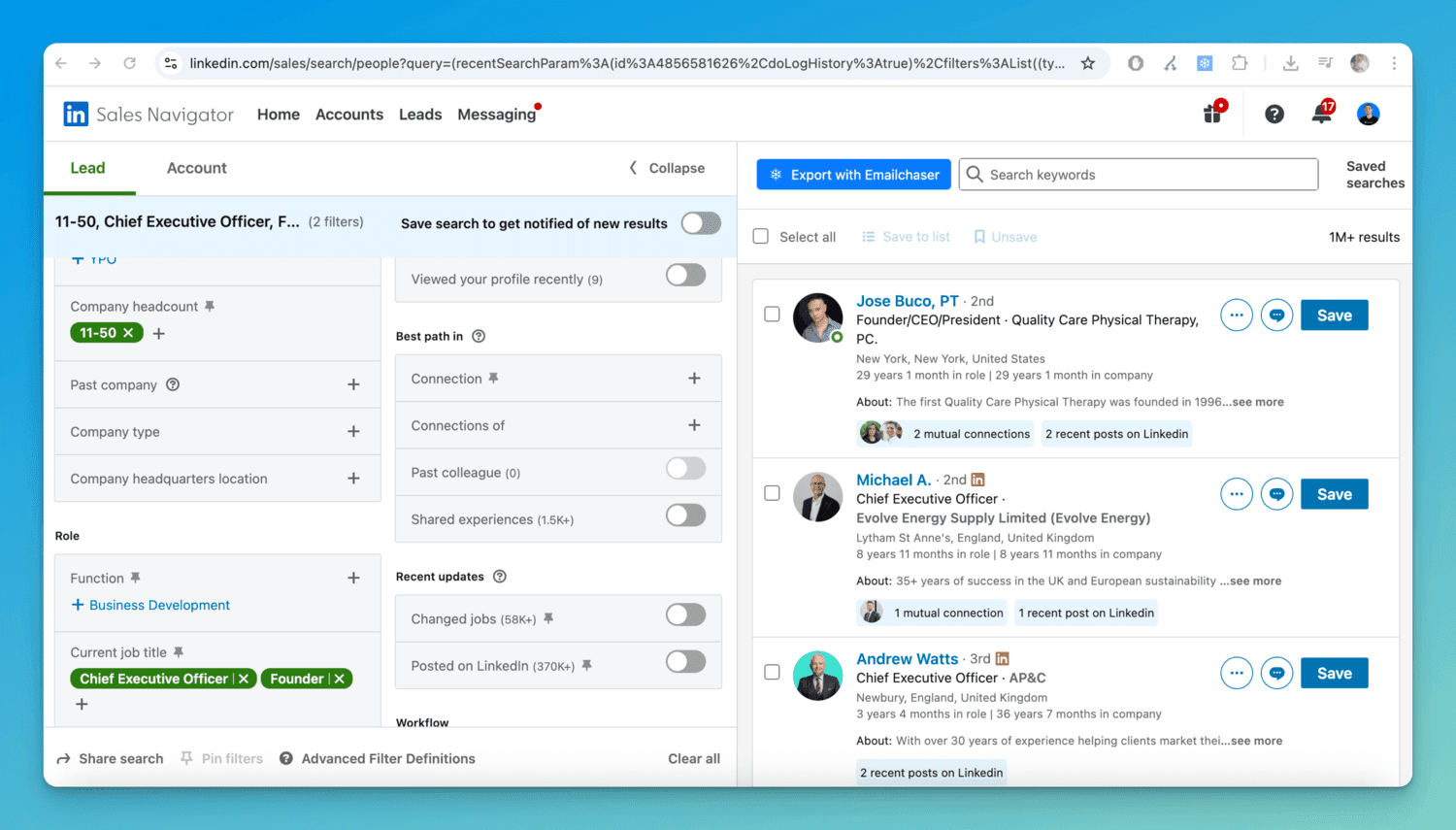
The problem is that LinkedIn doesn't give you the email address of each lead; this means that you need to use a Chrome extension (like Emailchaser's Lead Finder extension) to extract these leads with their emails directly from Sales Navigator.
Emailchaser's extension is able to find the correct email address for each lead, even when the email isn't publicly available; it does this by taking the lead's name and company website, and then using double-verification to validate which email format is correct (since 99% of professional emails follow the same 10 formats).
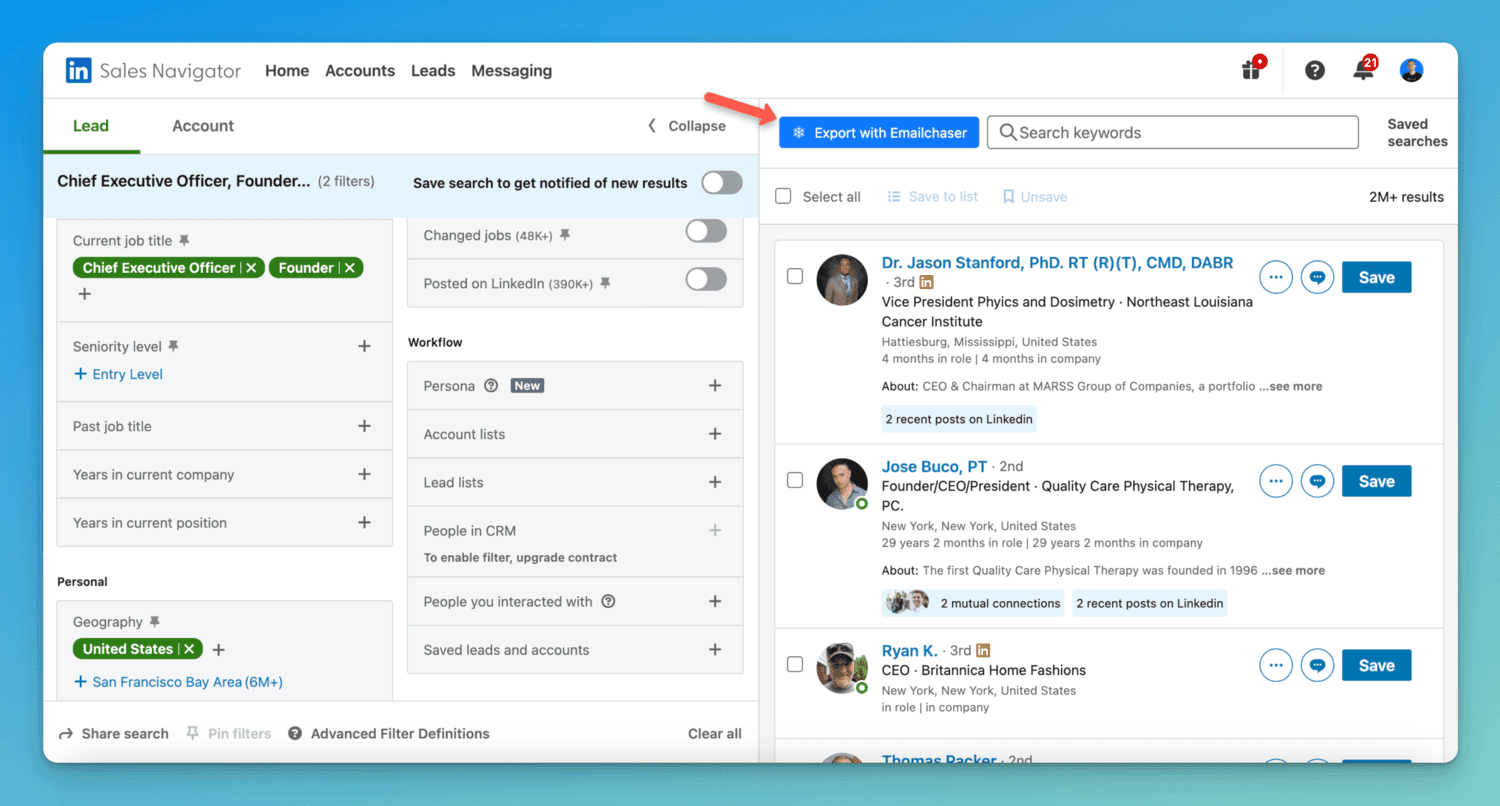
2. Job ad sites (LinkedIn, Upwork & Indeed)
You can scrape companies that are hiring from job sites like LinkedIn, Upwork & Indeed.
If a company is posting a job ad, then they likely need help.
For example, if a company is hiring sales reps, then they probably also need to buy sales software, so you could reach out to them to sell your sales software.
You can find pre-built scrapers on Apify. If you aren't technical, then you can hire a low cost developer to do this for you.
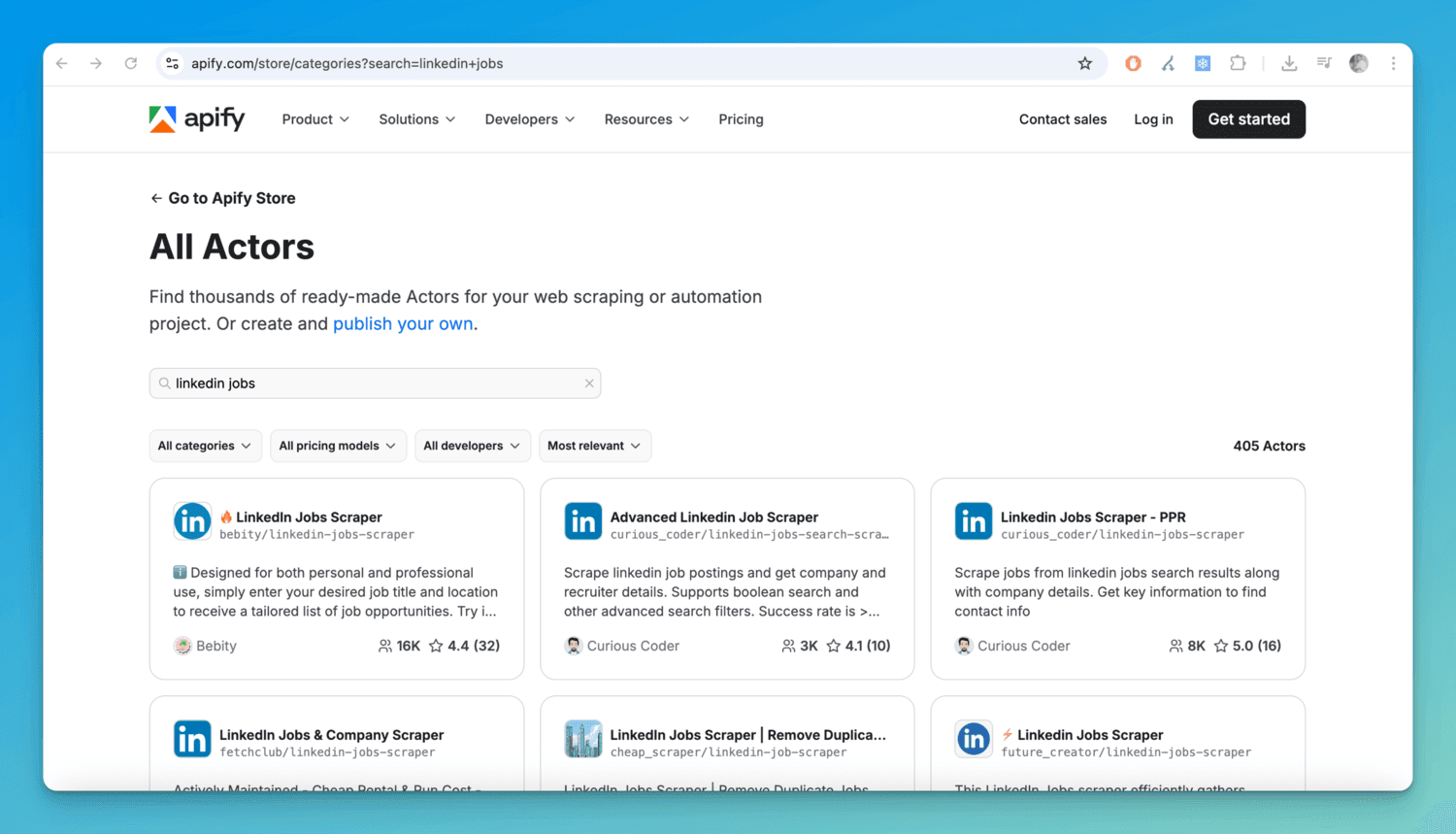
3. Crunchbase & PitchBook
Crunchbase and PitchBook are websites that allow you to find companies that recently raised funding.
Companies that recently raised funding are more likely to be investing heavily in growth and product. These are the types of companies that are more likely to buy your product or service, thus making them good leads to go after.
The below tweet shows Brex’s ex-Chief Revenue Officer talking about how they used PitchBook to find companies for their most successful outbound sales campaign:
1/ The best outbound campaign we ever ran at Brex (75% demo rate, 75% demo to close):
— Sam Blond (@samdblond) January 9, 2023
Brex launched in 2018 as the first corporate card for startups. After launch, when we were still ~30 employees and near 0 rev, we ran the most successful outbound campaign I've ever seen.
4. Competitor audiences
Another way to find leads is by extracting your competition's connections on LinkedIn.
For example, you can send connection requests on LinkedIn to all of your competitors (their founders/CEOs).
When they accept your connection requests, you can open LinkedIn Sales Navigator, and using Emailchaser's Lead Finder extension, extract all of the connections that these competitors have on LinkedIn.
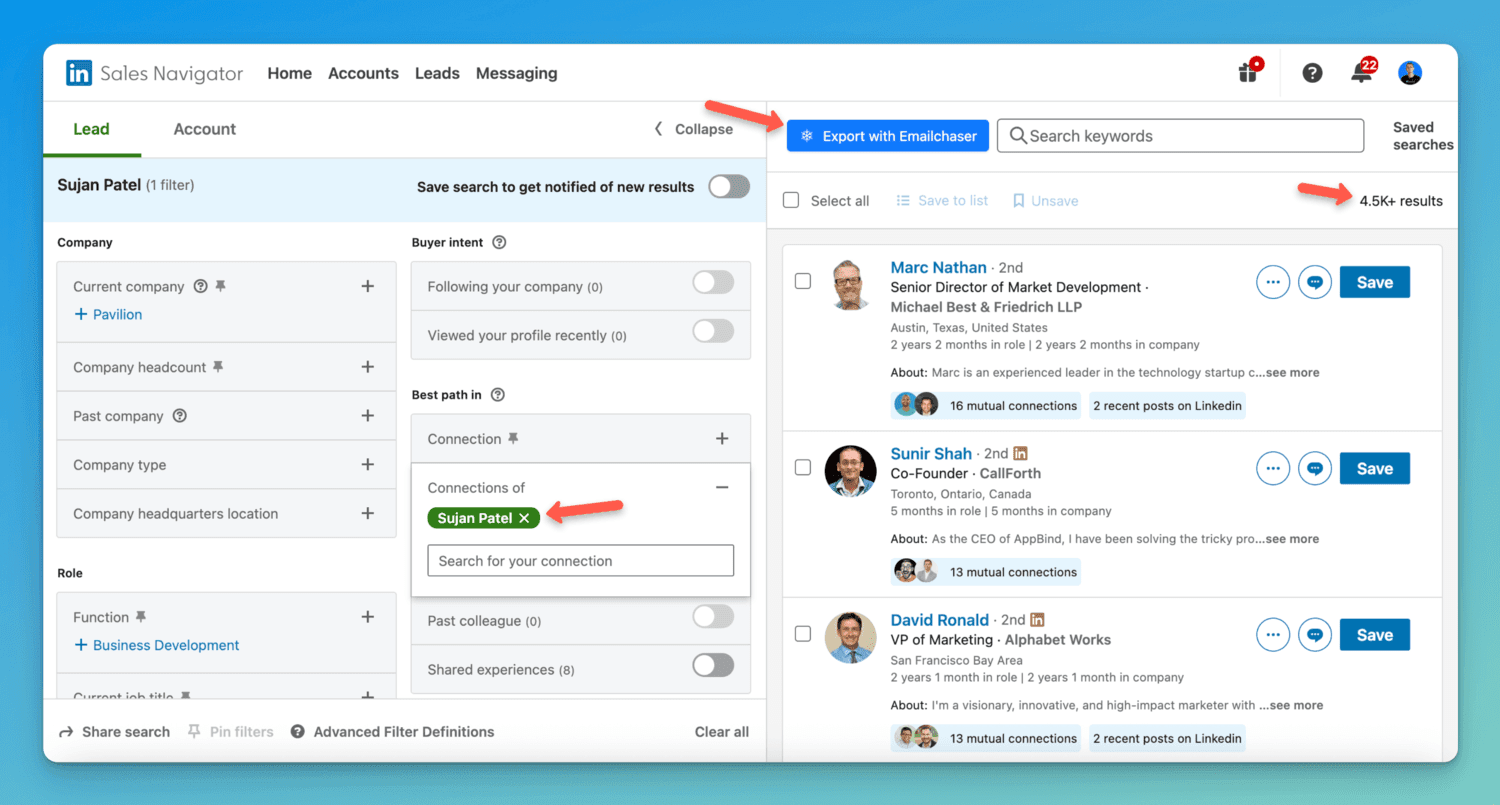
You can make lists of tens of thousands of people that are likely to be users of your competitors' products, and then contact them by uploading them to a cold email campaign in Emailchaser.

5. Find “top companies in x category” with Google, X & ChatGPT
Another effective way to find leads is to search Google, X & ChatGPT for “top companies in x category”.
For example, if you were building a newsletter software company, and all of your potential customers are people that own blogs, you could search Google for “top blogs in x category”.
You would then find dozens of articles highlighting relevant blogs that you can reach out to.
In the below X post, Nathan Barry explains how he used this method to grow ConvertKit to over $100,000 in MRR:
My software company hit $1,500 MRR and then got stuck.
— Nathan Barry (@nathanbarry) October 27, 2022
...Until I pivoted marketing tactics.
Here’s the exact method I used to scale to $100k MRR in the next 12 months: pic.twitter.com/9k8V1jMkh3
6. Google Maps
If you are targeting local businesses, then Google Maps is the best place to find relevant companies to reach out to.
You can use a pre-built Apify scraper to scrape companies directly from Google Maps.
I recommend that you eliminate low quality companies; for example, you can only extract companies that have an average review rating of at least 3/5, with at least 10 reviews. This allows you to focus your efforts only on companies that are likely to convert.
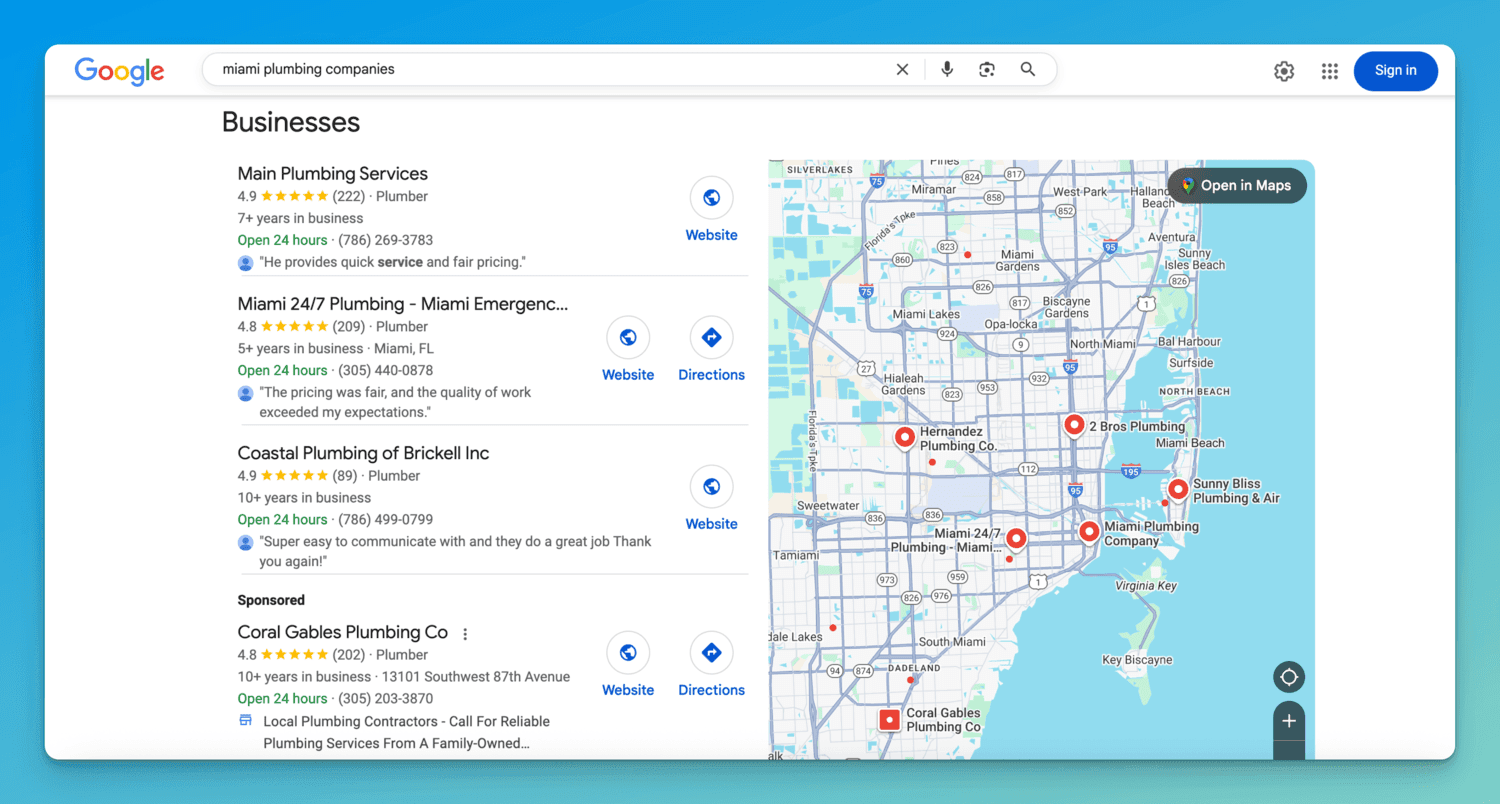
7. YCombinator
YCombinator is the largest startup accelerator in the world.
Companies such as Airbnb, Stripe and Dropbox have gone through YCombinator’s program.
YCombinator’s website lists all of the companies that they have invested in. This is a great place to find leads as all of these companies are recently funded.
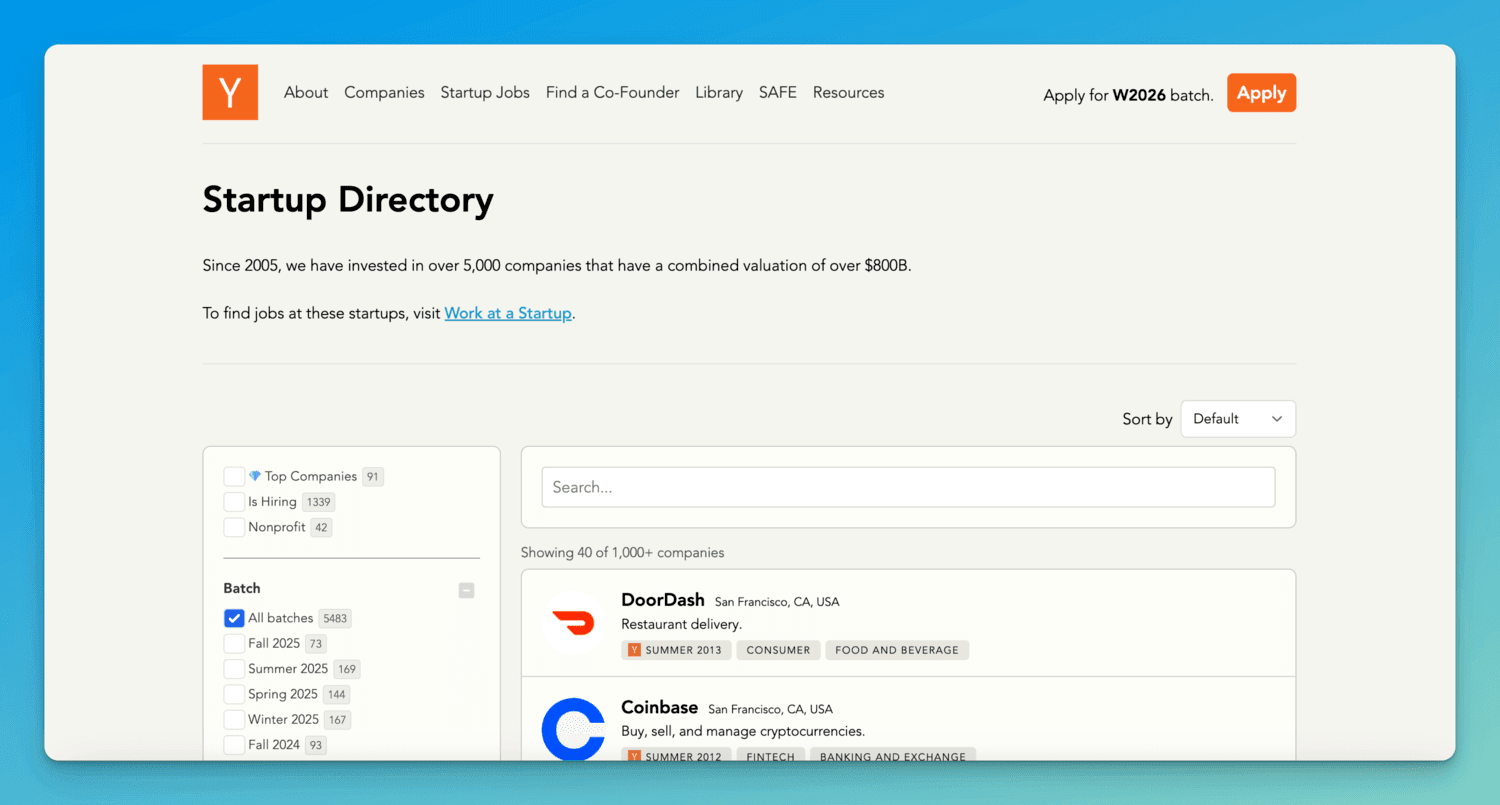
Final thoughts
LinkedIn Sales Navigator is usually the best way to find B2B leads for outbound sales.
You can use Emailchaser's Lead Finder feature to extract leads with their emails from Sales Navigator.
It is important that you don’t buy existing email lists, as these lists are often inaccurate and contain “spam traps” which will cause your emails to go to spam.
Article by
George Wauchope
Founder of Emailchaser.
I have been working in the sales & marketing industry for nearly a decade.
When I’m not working on my business, I enjoy eating sushi & doing jiu-jitsu.
About the author
Address: 151 Calle de San Francisco San Juan, Puerto Rico
Email: [email protected]
© Copyright 2025 Emailchaser